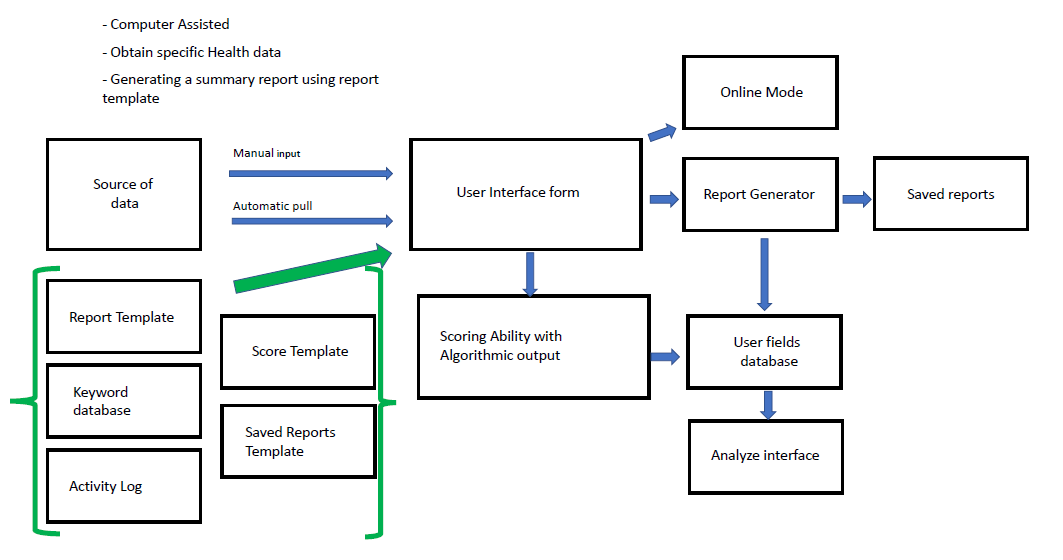Faster and Better Appeals
What’s Different about Aerolib AI
Surgical Templates
As of May 2022, there are 4 Surgical Templates for data entry as Patient Forms: AICD, Total Knee, Total Hip, and Kyphoplasty. The templates accept the provider’s clinical inputs and notations. Templates can be saved, edited, resaved or overwritten with history of edits, user inputs, production and use of AI-generated appeal letters. Each template uses the data input to generate a Prescreening Score, with recommendation for appeal or not.
Medical Templates
As of May 2022, there are 15 Medical Templates for for data entry as Patient Forms including AKD, ARF, Afib, Cellulitus/Infection, COPD, CHF, GI Bleed, IM, Pneumonia, SIRS/Sepsis, Seizure, TIA/CVA, UTI, and an Internal Medicine – Concurrent SHORT FORM. The templates accept the provider’s clinical inputs and notations. Templates can be saved, edited, resaved or overwritten in a single source archive, the History Screen. with history of edits, user inputs, production and use of AI-generated appeal letters. Each template uses the data input to generate a Prescreening Score, with recommendation for appeal or not.
Patient Forms with Customizable Data Fields
Many of the data fields in the Patient Forms have text areas for the provider to enter their own text, and there are many more that use Drop-down menus selections to allow for many different common phrases used in documentation and appeal letters, including an “Other” selection that allows a provider to enter their own. All such fields are also spell-check enabled for convenience.
Prescreening for Audits
The Diagnosis Specific Medical or Surgical Templates produce Patient Forms accept the provider’s clinical inputs and notations, producing a Prescreening Score with recommendations for appeals. The Scores are saved with their Patient Forms, which can be saved, edited, resaved or overwritten with a history of edits & reviewer inputs. Later edits and/or inputs will generate an Appeal Strength Score and recommendations for appeal.
Algorithms Predict Appeal Strength
Multiple risk factors have been analyzed from Aerolib’s database of Inpatient admissions using both simple and multivariate logistic regression, the most commonly used machine learning algorithm. The algorithms find the correlation between the multitude of variables in any clinical scenario, allowing predictions of postoperative complications and readmissions. All Patient Forms can be edited or updated to produce the case’s Appeal Strength Score for preview before any appeal letter is generated.
AI-generated Appeal Letter Writing
Multiple templates automatically create surgical or medical appeal letters for Inpatient cases. Letters can be saved in the case history, output as an Adobe PDF, and/or emailed to any valid email address input by the provider. All letters include pertinent clinical information, as well as clinical references and medico-legal discussion of why the denial should be overturned.
Single Source Archive
All Patient Forms and Appeal Letters generated from them are saved and accessible via a single History Screen. The list of Forms can be sorted by Newest/Oldest; and can be searched by Patient Name, Reviewer Name, and by Keywords.
Patent Pending
Aerolib has applied for a patent with United States Patent and Trademark Office (USPTO), described as follows: The present invention determines the status of hospitalized patient as to whether, they should be treated as inpatient or needs to be provided with observation level of care. The invention ascertains the stratification of patients’ status through an algorithm guided automated system. The algorithm based automated patient stratification system is based on a statistical scoring pattern that utilizes raw data of hospitalized patients.
The following diagram accompanied the patent filing:

How The Portal Scores Each Case:
The AerolibAI Denials and Appeals Portal presents an automated method of physician recommendation for hospital bedding status, based upon statistical analysis of a database of randomly selected hospitalized patients’ documented symptoms and ages.
The database was comprised of the following steps:
- randomly selecting 2,000 hospitalized patients from a database of 14,000 hospitalized encounters over a 10 year period;
- classifying the patients on the basis of their age;
- allocating pre-assigned “keyword symptoms” to the different patient age classes;
- generating respective frequency against the keyword symptoms;
- dividing the hospitalized patient samples into inpatient and observation level categories;
- determining the probability of occurrences of the different keyword symptoms;
- assigning an appropriate score for the symptoms on the basis of frequency;
- and finally, generating recommendations based on a logistic regression of the sample data and the patient’s age.
The Portal then presents the most probable status (inpatient or not) as a percentage of this patient’s confluence with hospitalized patients having similar symptoms and age, known to be accepted an inpatient under CMS’ requirements for Medical Necessity of hospital services in an inpatient setting.

